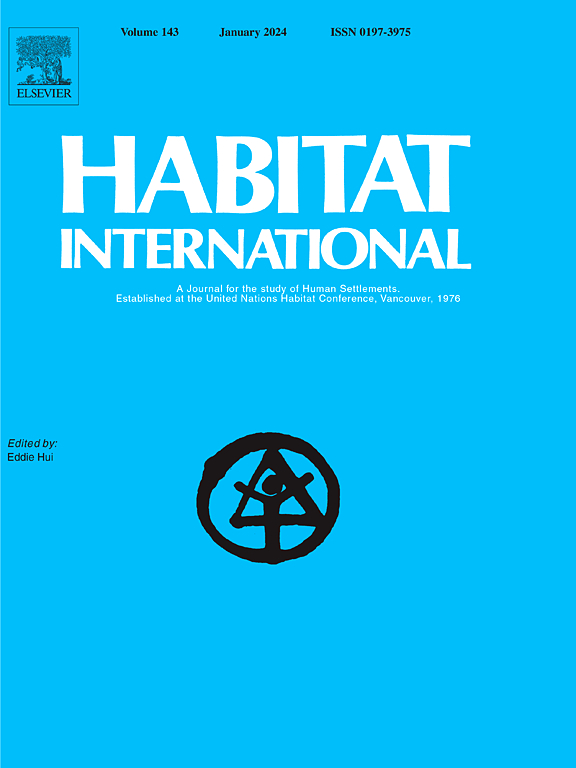Fragmented expansion induces rural housing wealth differences in urban fringes: Evidence from fine-grained housing data in Shanghai, China
IF 6.5
1区 经济学
Q1 DEVELOPMENT STUDIES
引用次数: 0
Abstract
The dynamic changes in urban fringes have been widely studied in the context of suburbanization, but few studies have disaggregated the fragmented expansion or intrinsic differences in rural housing at the household or village level. Using fine-grained housing data from 66 villages in Shanghai for the period of 1978–2017, we elucidated the fragmented variation in rural housing and the state of wealth differences in urban fringes at the household or village levels, as well as examined the relationships between rural housing expansion and housing wealth differences through the combined use of Gini coefficient decomposition, Shapley decomposition, and quantile regression. The results showed that the disparate increases in rural housing wealth in Shanghai's metropolitan suburbs were largely due to the unapproved and frequent growth of auxiliary rooms in households. Villages adjacent to downtown areas or towns have been able to engage in this form of construction more than those further away, stimulating rural housing differences at the landscape scale. Driven by the opportunity spaces that emerge from government policies and the demand for rentals near sources of urban employment, the unregulated and disorganized dynamic of rural auxiliary rooms have exacerbated existing inequalities and resulted in stratified wealth differentiation within urban fringes. In conclusion, we suggest clarifying the approval system for the construction of rural rooms and implementing effective land use planning to manage fragmented housing growth, thereby leading to more balanced wealth growth and improved land use efficiency.
碎片化扩张导致城市边缘地区农村住房财富差异:来自上海细粒度住房数据的证据
在郊区化的背景下,城市边缘的动态变化已经得到了广泛的研究,但很少有研究在家庭或村庄层面分解农村住房的碎片化扩张或内在差异。本文利用1978-2017年上海66个村的细粒度住房数据,在户级和村级层面上阐明了农村住房的碎片化变化和城市边缘地区的财富差异状况,并结合基尼系数分解、Shapley分解和分位数回归分析了农村住房扩张与住房财富差异之间的关系。结果表明,上海大都市郊区农村住房财富的差异增长主要是由于家庭附属房的未经批准和频繁增长。与市中心或城镇相邻的村庄比远离市中心或城镇的村庄能够更多地参与这种形式的建设,从而在景观尺度上刺激农村住房的差异。在政府政策带来的机会空间和城市就业来源附近的租金需求的推动下,农村辅助房不受监管和无组织的动态加剧了现有的不平等,并导致城市边缘地区的分层财富分化。综上所述,我们建议明确农村住房建设审批制度,实施有效的土地利用规划,以管理碎片化住房增长,从而实现更平衡的财富增长和提高土地利用效率。
本文章由计算机程序翻译,如有差异,请以英文原文为准。
求助全文
约1分钟内获得全文
求助全文
来源期刊

Habitat International
Multiple-
CiteScore
10.50
自引率
10.30%
发文量
151
审稿时长
38 days
期刊介绍:
Habitat International is dedicated to the study of urban and rural human settlements: their planning, design, production and management. Its main focus is on urbanisation in its broadest sense in the developing world. However, increasingly the interrelationships and linkages between cities and towns in the developing and developed worlds are becoming apparent and solutions to the problems that result are urgently required. The economic, social, technological and political systems of the world are intertwined and changes in one region almost always affect other regions.
 求助内容:
求助内容: 应助结果提醒方式:
应助结果提醒方式:


